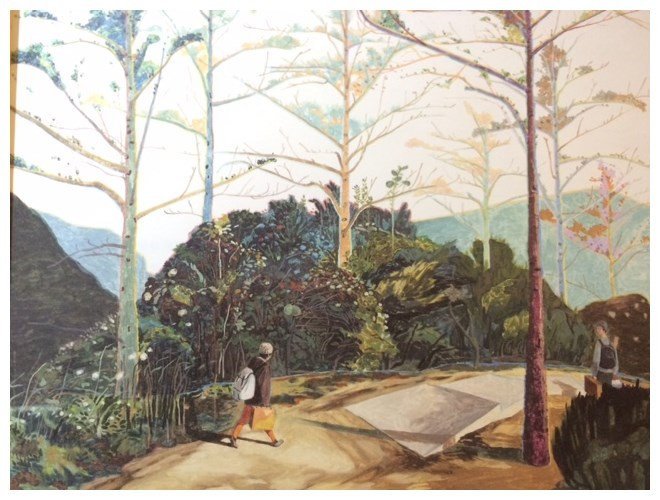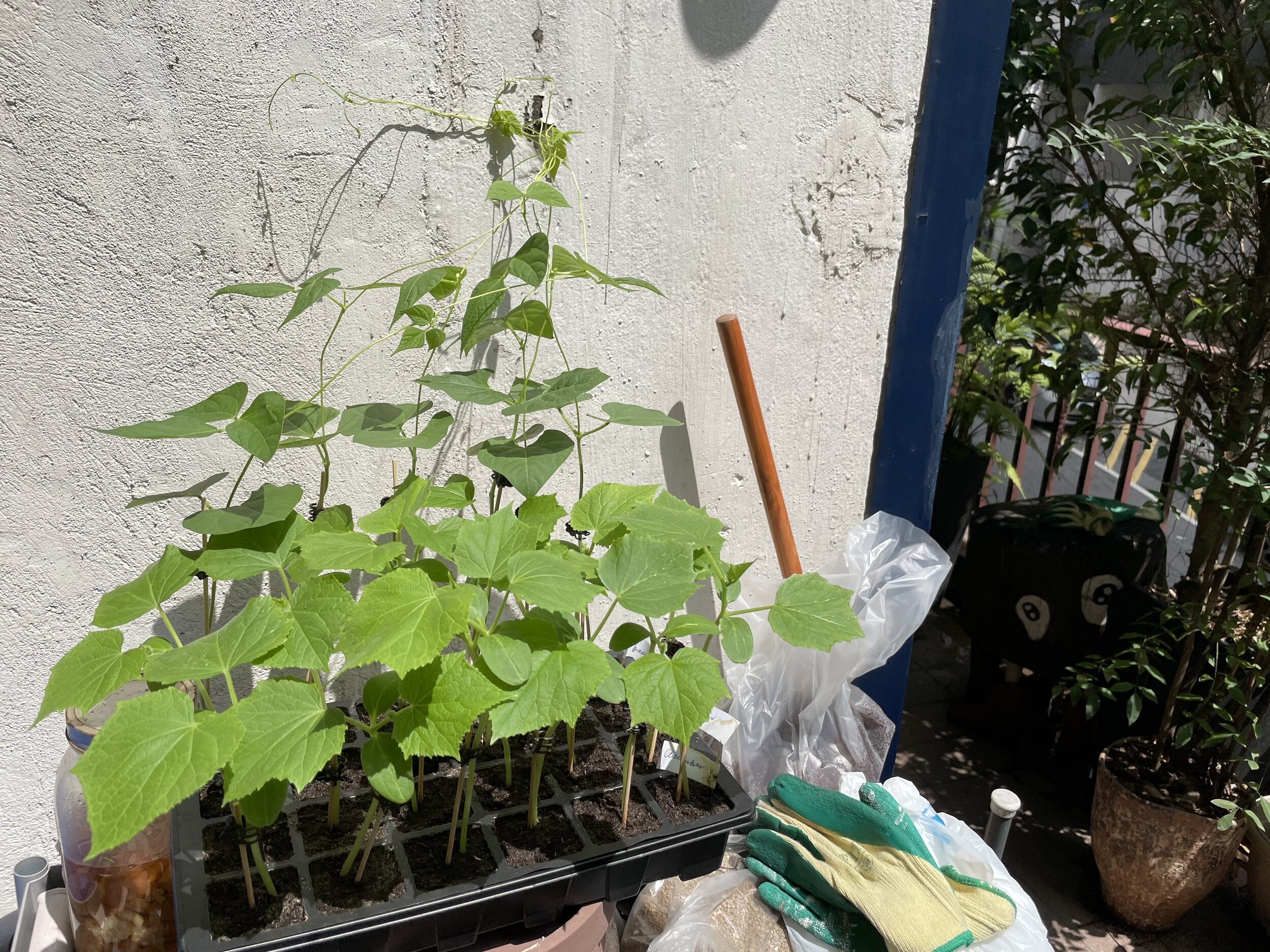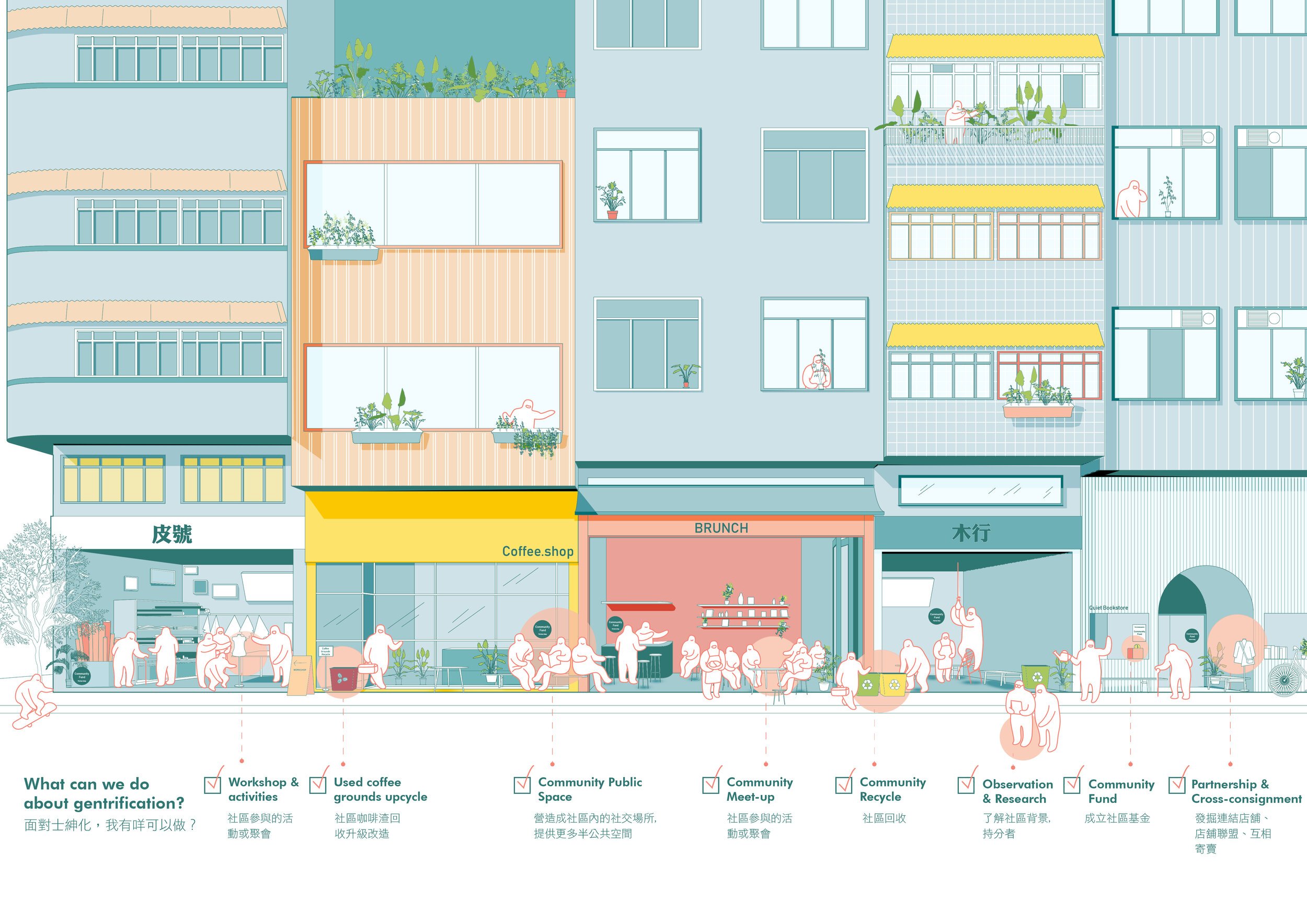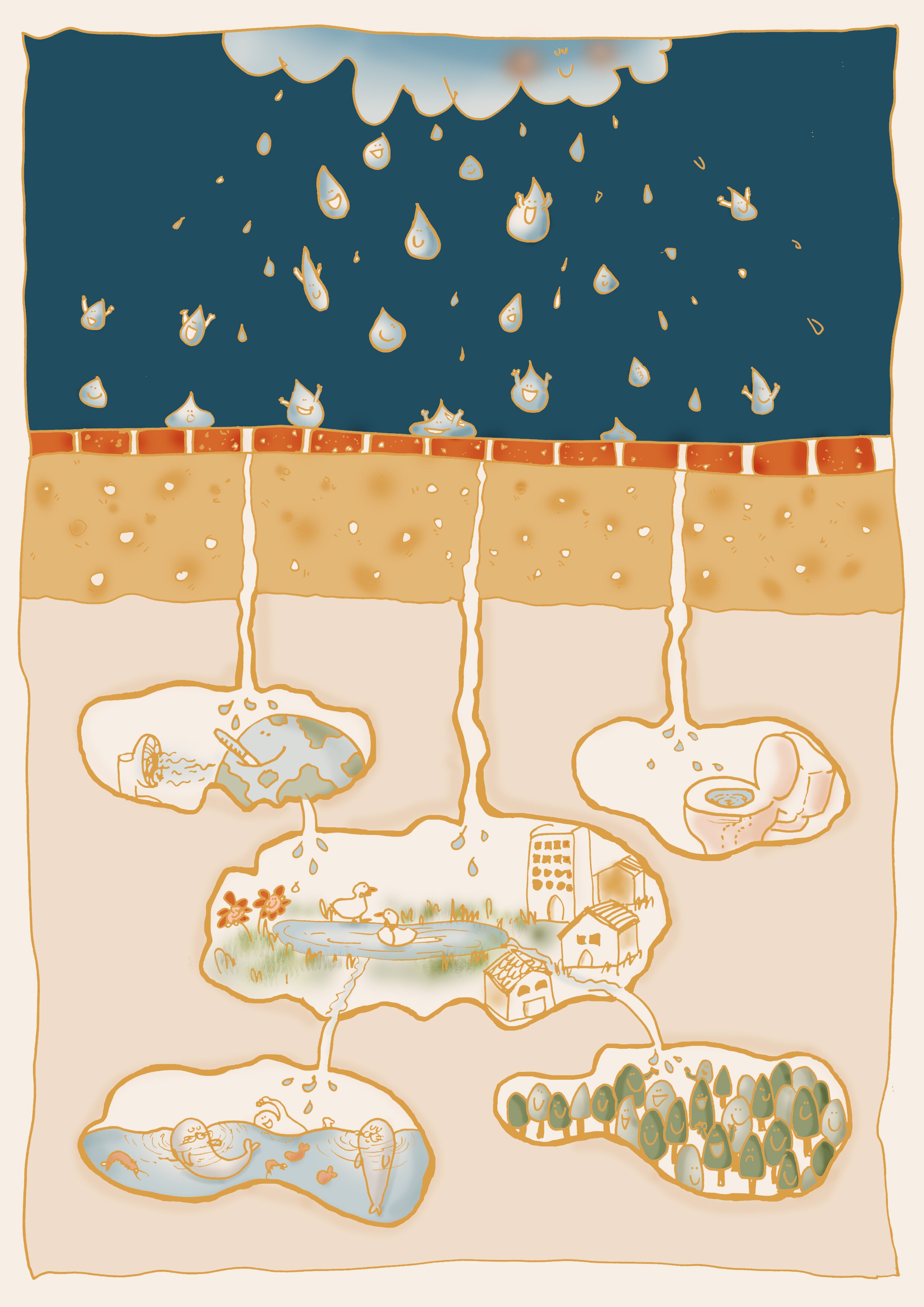第一回:海岸線 — 如果,沿岸的潮汐站,連起一條生態海岸線……|Episode 1: When tide gauge station fulfil more than its scientific purposes
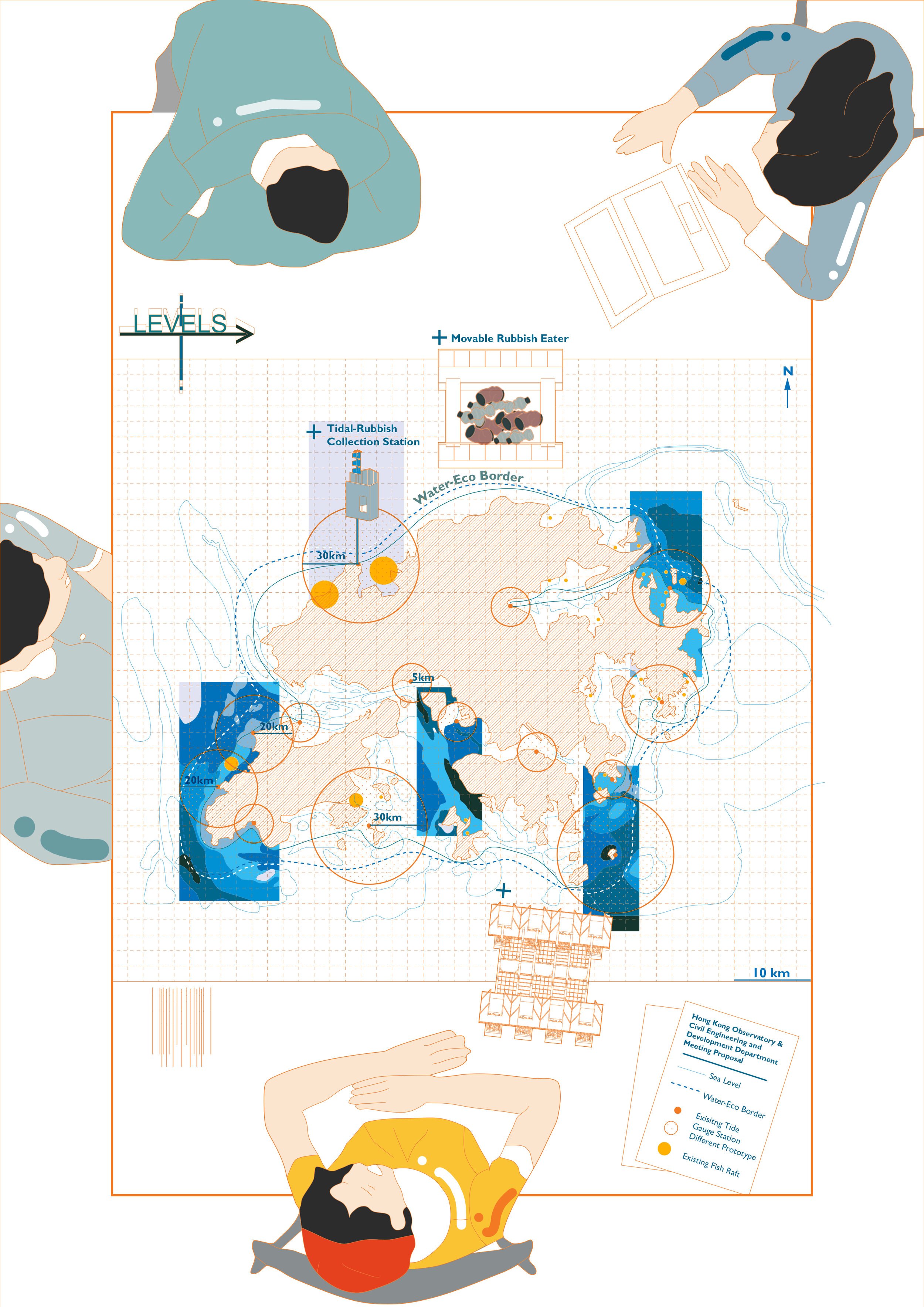
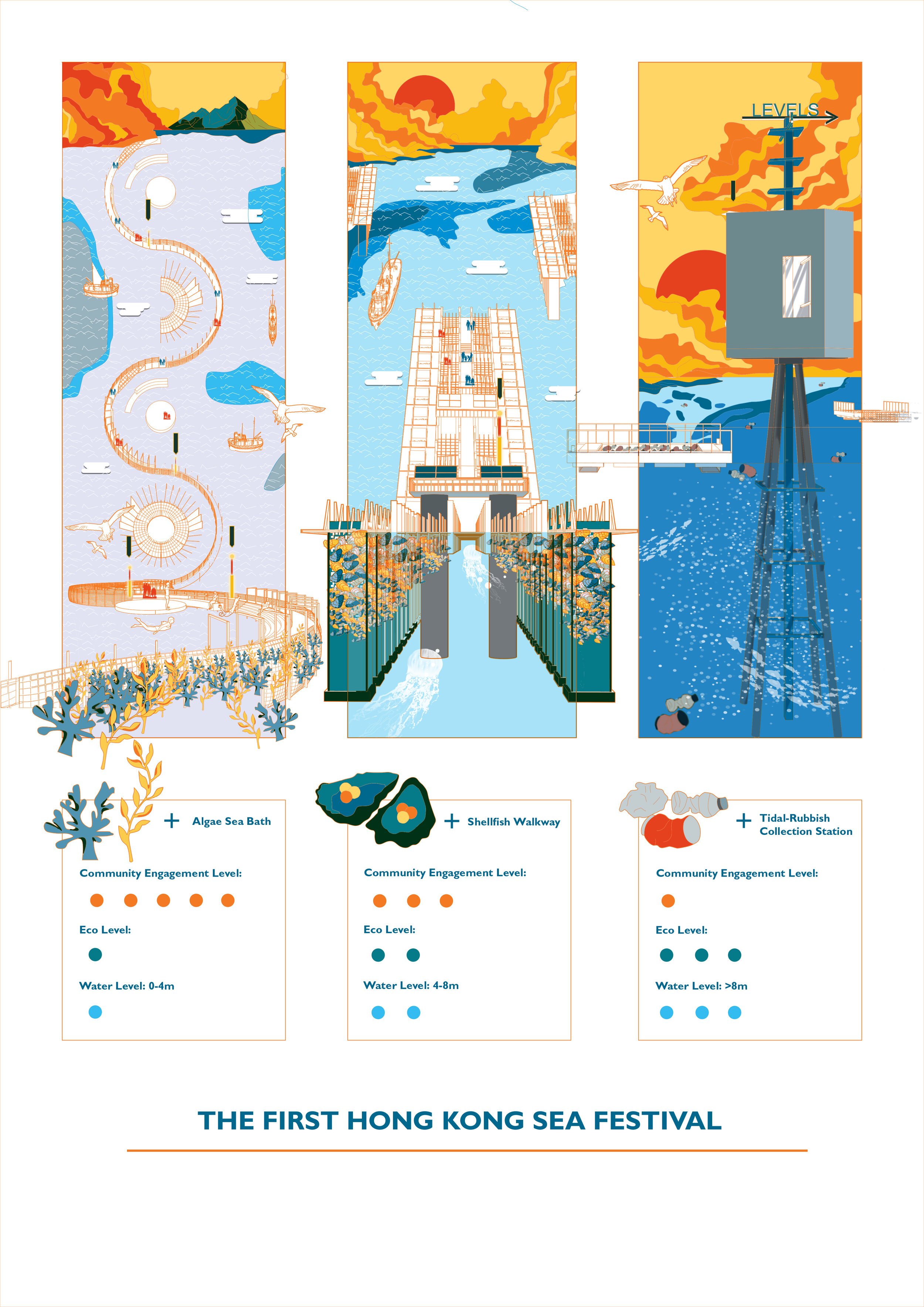
吉城記
2019年成立的空間活用及改造案例平台「GUTS 吉人吉事」,經過一年的蛻變後再下一城,延伸出「GUTS:CITY 吉城記」以搜羅香港各處具潛質的地方,探索改造空間的可能性並予以實踐。
這個新計劃銳意建立一個更美好的香港,擺脫舊時只講求實用建築的時代,充分利用被忽略的公共和私營空間。這些城市吉事構思主要屬推測性質,但其設計旨在與現有的城市面貌接軌,希望增加在建設上的可行性,終有一日可以出現於我們生活的城市。
這些城市吉事方案總結我們在吉人吉事探討過的各個主題,它們並非唯一的對策,而是希望激發大家的想像力,發掘更多具創意的構思。
在大埔沿著吐露港騎單車,在岸邊總見到一個像白色四方盒的建構物,沒有顏色、沒有介紹,卻又佔著最優美的海岸最前端,風雨不改地看著波濤拍浪,究竟它是什麼?
這是天文台位於大埔滘的潮汐測量站(Tide Gauge),負責監測水位變化,在颱風來襲時更是協助預測風暴潮的重要設施。在香港沿岸,其實共有14個潮汐站,面對惡劣天氣,這些潮汐站堅毅不屈;遇到在岸邊玩耍的兒童,它們也同樣面不改容。潮汐站,除了擔當一個理智冷靜的科學家以外,它還可以更落地、在它身處的地區有更多使命嗎?第一期GUTS:CITY,我們將看看潮汐站,在社區規劃之中是否可以有更多可能性。
連結14個潮汐站,建立生態海岸線
散佈在香港沿岸各處的潮汐站,連起來可以成為一條新的生態海岸線:海岸線作為海洋與陸地的相連點,它經常是海洋垃圾的積聚處,新的海岸線,長遠可發展過濾和阻隔的系統,處理從海上飄來、及從陸地排入的垃圾。
至於身處不同地區的各潮汐站,按該地的地理脈絡、社區特徵,可發展成不同功能:
海藻林
若該處屬於淺水區域(水深少於4米),而圍繞的社區人口密集,潮汐站之下的海岸,可以發展成為海藻林,把社區大量排入大海的有毒污染物過濾潔淨,讓附近海域重新吸引更多海上活動。
魚排
中等水深的潮汐站,可在潮汐站之下建蠔排,讓蠔類及貝殼類生物有可依附的地方。它們的生長,有助於改善水質,重建生物多樣性豐富的海洋生態。海面則可建有沿岸步道,吸引更多人到此認識本地的海洋生態。
海岸垃圾收集點
位處較偏遠的潮汐站,若海域有足夠水深(如水深多於8米),可在潮汐站停泊大型的垃圾清理裝置(Movable Trash Eaters),在岸邊過濾垃圾之餘,它可同時出動到不同區域收集及清理香港的海洋垃圾,亦可以協助民間團體,統一收集透過划船等撿拾的垃圾。
公共設施的設計,首要當然是能讓它能發揮本來的功能,但除此以外,我們可以在設計上再多花心思,讓公共設施使用的空間可一舉多得。香港擁有世界知名的海岸,我們應該發揮更多想像,思考更多可能性,令人們在陸地與海洋之間的互動可以更多元、更有趣,然後再踏前一步,克服困難,把想像成真﹗
地點 : 香港各個潮汐測量站
GUTS:CITY
GUTS, emblematic of Generative Utilisation and Transformation of Spaces, was born in 2019 as a platform to seek progress from mere identification of compilation of different instances of GUTS. A year later, we now proudly present GUTS:CITY to scout potential sites across Hong Kong to explore and implement transformative interventions.
As an affiliation of GUTS, the new initiative envisions a better Hong Kong that evolves from sheer utilitarian structures and underuse of public and private spaces. While our proposals will primarily be set out to be speculative, they are also designed to be compatible with existing contexts with an elevated level of buildability in hopes that this better vision we dream of will meet the one we currently live in.
These GUTS:CITY proposals serve as concluding chapters of the different themes that we have explored at GUTS. These ideas and proposals are by no means the only solutions – they are incubators of even more creative ideas from our fellow GUTS:MAN.
There are 14 Tide Gauge Stations along the coastline of Hong Kong standing in solitude against the reckless typhoons and the never-ending bombardment of sea waves. These stations are always stoic in the face of these harsh conditions, and stoic they remain even when the friendliest of children attempt to reach out and approach them. Does this have to be the case? Can Tide Gauge Station be more than a silent observer, but rather, an active guardian that protects and provides for the community around it? For this episode of GUTS:CITY, we have looked into the typology of a Tide Gauge Station to see if there is more that can be offered by these stations.
Tide Gauges Stations as Nodes of the New Water-Eco Border
Scattered along the coastal border of Hong Kong, the tide gauge stations can double their function as nodes that form the new water-eco border. At the interface between sea and land, which is the main contributing site of sea garbage, the new Border can eventually become a mechanism that catches and filters the incoming and outgoing floating trash.
For each station itself, depending on its immediate geographical context and community demographics, different adaptations can be introduced.
Algae Sea Bath
If the site is relatively shallow (<4m), with an active community around, the tide gauge station can double as an Algae Sea Bath. Lining the perimeter with algae, a filtered zone can be formed with the algae feeding on some of the harmful substances in the sea. The clean water body can thus become a sea bath for different water activities.
Shellfish Walkway
For sites with medium depth (4-8m), with a somewhat active community, we can anchor a fish raft at the tide gauge Station. With surfaces for shellfish to adhere to, the water quality at these fish rafts would also improve, encouraging biodiversity. A walkway would then be developed to attract visitors to learn more about the diverse sea life in the water body of Hong Kong.
Tidal-Rubbish Collection Station
At remote sites with a deep seabed (>8m), a docking station for mobile Movable Rubbish Eaters can be incorporated, allowing these rubbish eaters to be deployed to the different areas of Hong Kong’s open water to collect floating trash. The station then doubles as the trash collection station, that both passively filter out tidal trash as well as to facilitate the active collection by the rubbish eater and the water sportspeople who might be collecting trash while kayaking, canoeing, etc.
While adequate design can ensure each tide gauge Station will function optimally, there is more that can be done for the built structures in our city. Boasting one of the longest coastal borders of a city, one can imagine how much improvements can be implemented to enhance our experience at the interface between the water and land. The next step would be to turn these into a reality!
Location: Tide gauge stations in Hong Kong
你可能對以下吉人吉事有興趣:
You may also be interested in these GUTS Stories:




